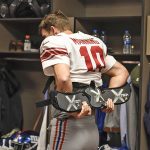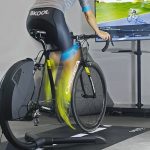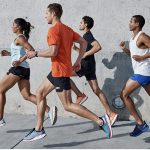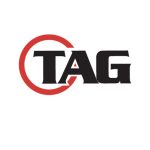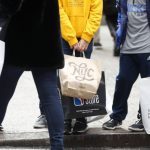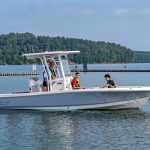Retailers were expected to suffer a great deal in April after the loss of the Easter holiday sales period to the month of March, but the consumer surprised many and kept things moving in April, particularly in the better department store and warehouse club sectors. (see chart here)
Based on the monthly survey of 70 retain chains conducted by the International Council of Shopping Centers, the consumer shrugged off higher gas prices in April to send retail sales up 2.2% for the month, beating ICSCs own forecast of a 2.0% increase. The Easter shift was estimated to have caused a 100 bps to 200 bps decline in comps for the month. Combined March/April sales were estimated to be up 3.1%.
Thomson Financial's index of monthly comp store sales, which surveys 64 retailers, saw comps rise 2.2% as well, the lowest monthly year-on-year increase since November of last year. “Overall, it was a pretty solid report,” said Thomsons Gint Rimas in a report. “Expectations were lower, but consumers are still out there shopping.”
“It wasn't a blowout month by any means, but it wasn't a disaster, either,” said Ken Perkins, president of Retail Metrics, in a research report. “The consumer continues to show resilience despite a relatively stagnant economy.”
While the “Luxe” retailers like Neiman (+14.2%), Saks Fifth Ave. (+7.1%), and Nordstrom (+6.9%) pushed the overall department stores sector higher for the month, the channel also saw sharp declines from Dillards (-6.0%) and the Saks Department Store Group (-5.4%) offset most of the gains.
The mid-market was also a tale of two cities as Kohls posted an 8.0% gain for the month and JC Penneys department stores posted a 3.6% increase, while Goodys saw comps fall 12.1% in April and Stage Stores posted a 2.5% decline for the period.
Warehouse clubs were the other beneficiaries of the strength of the mid- to upper-income consumers appetite. Sams Club (+4.9%), BJs Wholesale (+8.4%), and Costco (+8.0) all scored big for April.
Foot Locker Sees Marquee Fuel More Q1 Growth in U.S…
Foot Locker saw the increasing influx of marquee product, particularly at its Champs locations, help push comp store sales higher in the U.S in the first quarter, more than offsetting continued weakness in the European market. Sales for the quarter ended April 30 increased 16.1% to $1.38 billion, compared to $1.19 billion in the year-ago period. First quarter last year did not include the 350 Footaction stores that Foot Locker acquired last summer. The quarter also saw about 1.6% of the gain come from FX rate benefits. Comp store sales rose 2.6% for the period.
The U.S. business produced a mid-single digit increase in comp sales, with the suburban-based Champs leading the way with a double-digit gain for the period. A Foot Locker spokesperson told Sports Executive Weekly that the chain benefited from increased marquee product in the mix and better execution across the board. The U.S. Locker business, which includes Foot Locker, Lady Foot, and Kids Foot, was up in low-singles for the quarter. Foot told SEW that the U.S. Locker business is starting to see a higher percentage of the marquee product making its way into those stores as well, a move that SEW expects will help boost sales there.
Foot Locker said that the shift from classics to performance is in full swing at both urban and suburban locations, a fact that is driving up average selling prices and unit sales.
The DotCom business, which includes the Eastbay catalog and the footlocker.com units, was up in low-single-digits, an improvement from the last few quarters. Licensed Apparel had been a primary driver of the softness here and Foot Locker sees it having less of a negative impact as they anniversary the downturn in sales in the category. On the other side, the Direct business will see less upside from the move to performance and marquee product, since that business never saw a cut in product during the “spat”.
Outside the U.S., it is clearly Europe that continues to be a drag, as the U.K and France persist as trouble spots for this and most other retailers and vendors. Canada, which now has 165 stores, and Australia, which is home to almost 100 doors for the retailer, were both said to be “performing well.”
“We are seeing the benefits of a balanced portfolio,” said Peter Brown, treasurer of Foot Locker, Inc., in an interview with SEW. “When one sector is soft we see the gains elsewhere, which enables us to produce steady growth over time. We dont see sharp spikes and we dont have the sharp declines.”
Foot Locker is forecasting that first quarter EPS will increase 15% to 20% per share versus Q1 last year.
While Family Footwear Takes an Easter Hit in April…
Shoe Carnival continues to benefit from their strategic moves to shift product mix as well, as the family footwear retailer posted a 5.5% comp store sales gain for the quarter despite a tough April that nearly erased the upside from a very strong March. Total sales for the quarter increased 10.5% to $160.8 million, compared to $145.5 million in sales in Q1 last year.
April sales decreased 6.7% to $45.3 million from sales of $48.6 million in the year-ago period and same-store sales fell 9.9% for the month.
This sector, more than most, saw the most impact from the shift in the Easter sales period, a reality that Carnival president and CEO pointed out when reporting the 13% jump in comps last month.
Combining the results for March and April sees total sales increase 6.8% to $112.4 million and comps increasing 2.5% over last year.
For the combined two month period, Shoe Carnival said the Womens and Mens businesses were both up in mid-singles. Childrens, which includes Childrens Athletics, was down in low-single-digits. Mens and Womens Athletics were both up in low-single-digits for the two month period. Total footwear was up 2.6% and Accessories were down in low-singles.
The retailers Southern stores performed better for the period, increasing sales in the mid-single-digits, while the Northern stores comped “slightly negative.”
DSW Shoe Warehouse saw a reverse effect of the Easter shift, posting a strong 7.6% comp sales gain in April after a 1.5% same-store sales decline in March. Total sales for April increased 23.1% to $103.1 million versus $83.7 million in April last year.
For the quarter, comp store sales rose 4.4% and total sales increased 21.1% to $281.8 million, compared to $232.6 million in the year-ago period. DSW made up 41.4% of total sales for parent RVI in Q1, compared to 36.0% of sales in Q1 last year. RVI also owns Value City Department Stores and Filenes Basement.
Payless comps were down 2.8% for the month, but were up 2.7% for the quarter. Total sales fell 8.7% in April.
Pacific Sunwear could well be the victim of a shifting consumer base in the mall as other teen retailers rack up consistent double-digit comp gains each month. While A&F saw comps grow another 16% in April and American Eagle comps increased 20%, PSUN saw comps for both its mall format stores decline 6.4% for the period.
The retailer also pointed to a shift in Spring Break schedules as one possible reason for the decline.
The Guys business was down in low-singles at the PacSun format in April and Girls comps were down approximately 10% for the month. At d.e.m.o., the Girls business was up in the low-teens, but the Guys business was down in the high-teens for the period.
Total sales for Pacific Sunwear increased 3.5% in April to $76.4 million. For the quarter, sales increased 14.1% to $280.0 million and total consolidated comps improved 3.0%, with PacSun comping up 3.0% and d.e.m.o. same store sales increasing 3.2% compared to Q1 last year.
The Buckle must not have seen the same Spring Break effect as comp sales here rose 4.0% in April and total sales increased 8.7% to $29.7 million for the month. First quarter sales increased 11.3% to $105.5 million while comparable store sales rose 6.4% for the period versus last year.

